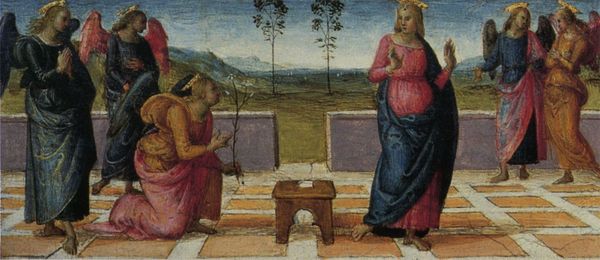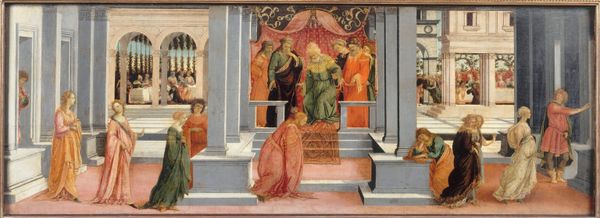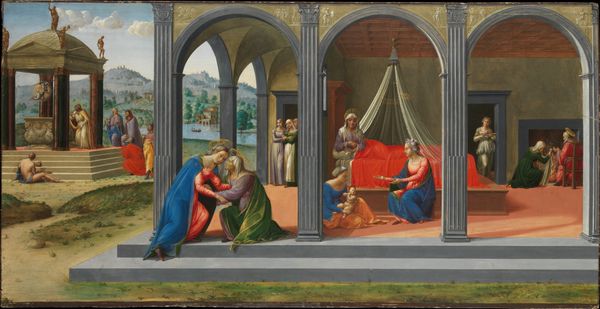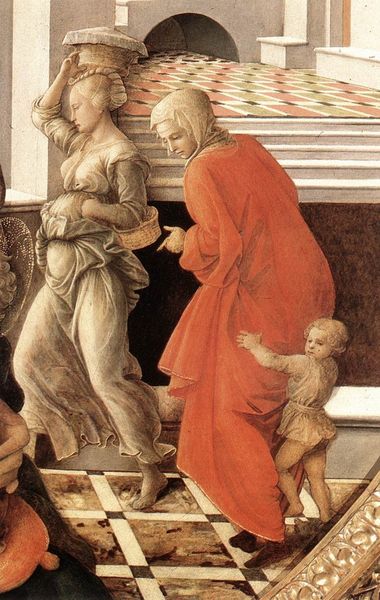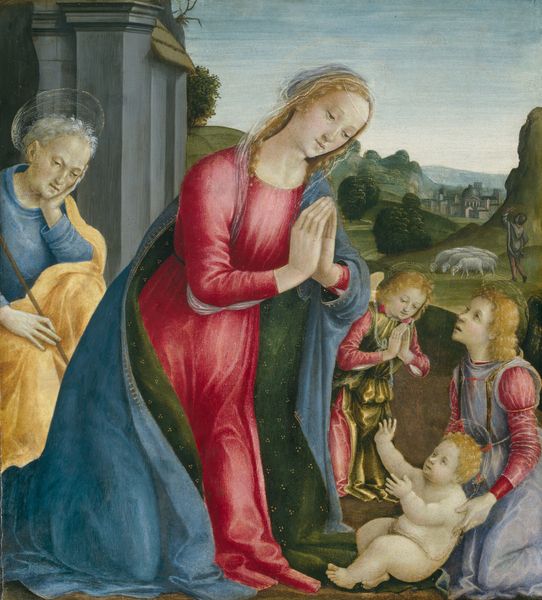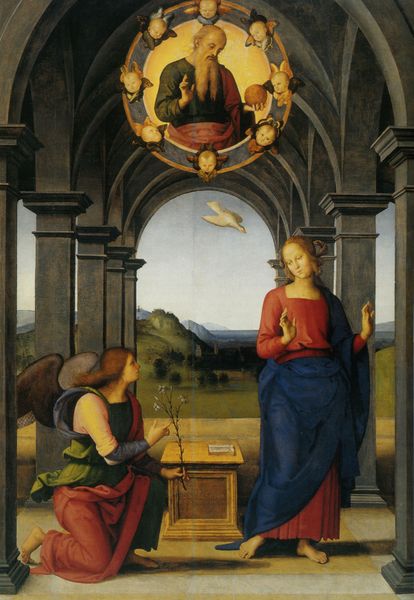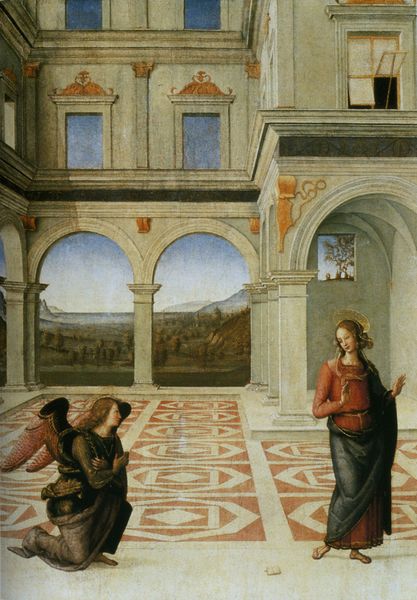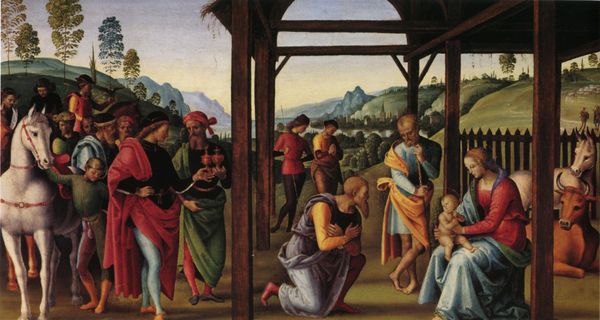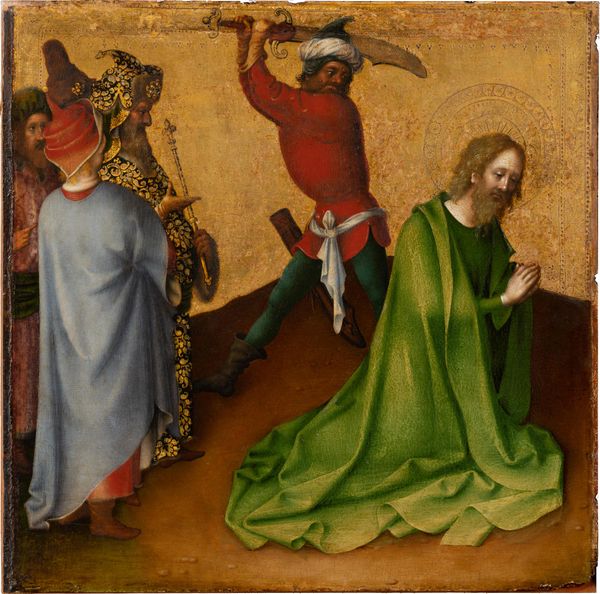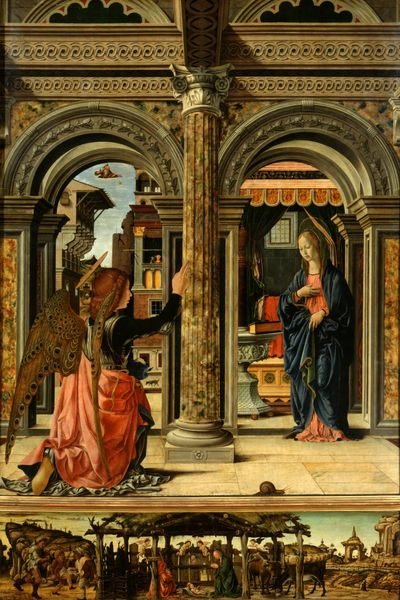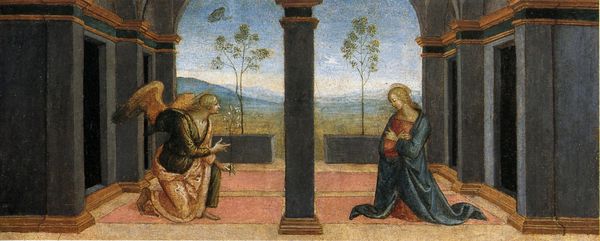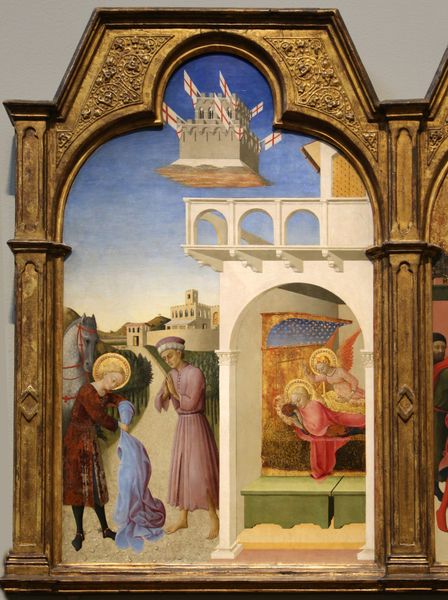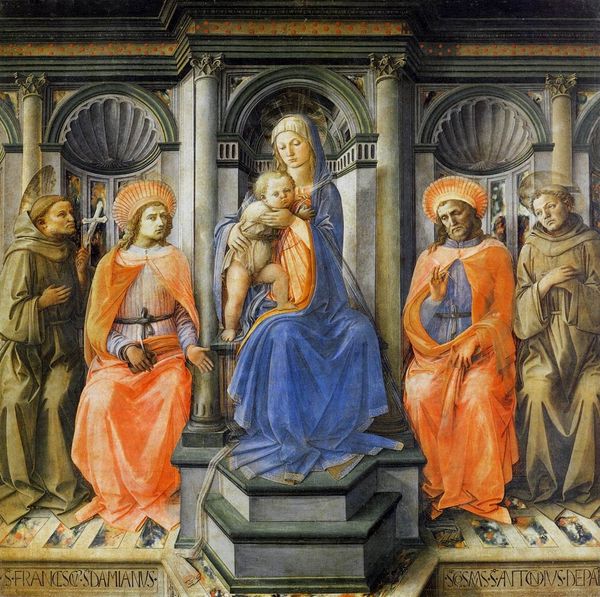
painting, oil-paint
#
narrative-art
#
painting
#
oil-paint
#
figuration
#
oil painting
#
history-painting
#
italian-renaissance
#
early-renaissance
Copyright: Public Domain: Artvee
Sandro Botticelli painted this Annunciation in Florence during the Early Renaissance. You can see how the angel Gabriel interrupts Mary in her private chamber to announce that she will become the mother of Jesus. Renaissance Florence was a deeply religious society in which the Church played a key role in politics, education, and the arts. This work demonstrates the significance of religious themes in Renaissance art, which were often commissioned by wealthy patrons or religious institutions. Botticelli's Annunciation reflects the humanism of the Renaissance through its naturalistic depiction of the figures, emotionality, and use of perspective to create a realistic space. By placing the scene in a domestic setting, Botticelli invites viewers to contemplate the divine mystery within a familiar, human context. To further understand this painting, we might explore the history of religious patronage in Florence, the theological debates of the time, and the cultural significance of the Virgin Mary. Art history provides a context for understanding how artists responded to the social, political, and religious forces of their time.
Comments
No comments
Be the first to comment and join the conversation on the ultimate creative platform.
